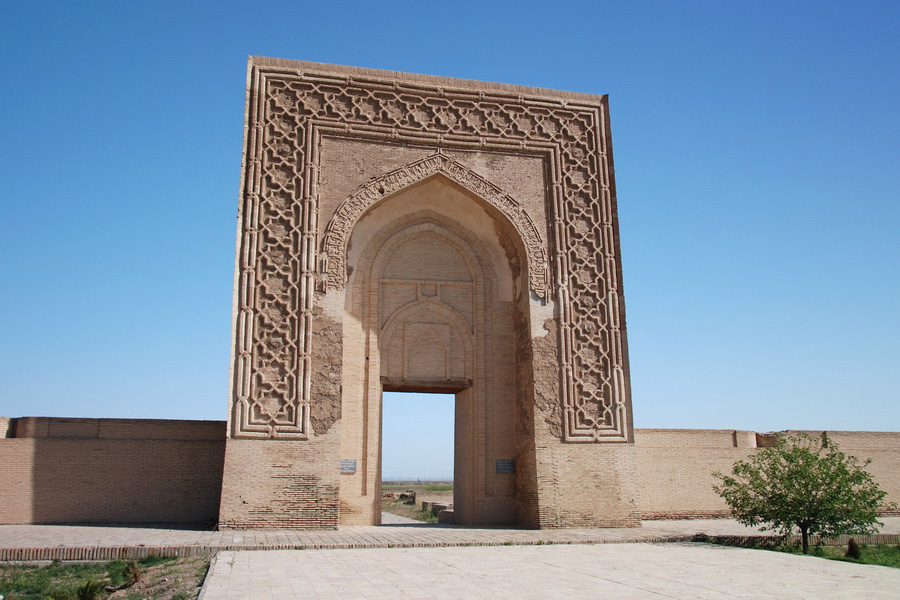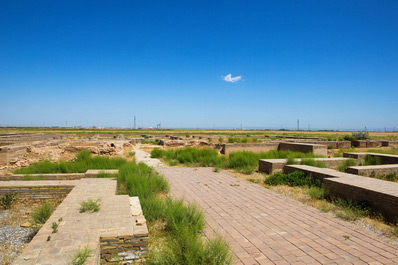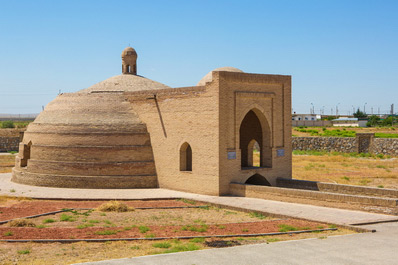Rabati Malik Caravanserai

Rabati Malik (Rabat-I Malik, Rabat-i-Malik), originally the summer residence of the Karakhanid khans, rulers of a powerful medieval state in Central Asia, stands as a historical relic of great importance. This grand structure, located near the modern city of Navoi, has left behind its foundation and an impressive entrance portal, which still remain today.
Constructed in the 11th century, the palace of Rabati Malik was renowned for its intricate design, which amazed visitors with its size, rich decorations, and the exquisite ornamentation of its façades. The palace reflected both the grandeur of its rulers and the artistic craftsmanship of the period.
In the 13th century, following the destructive Mongol invasion, the palace and its surrounding structures were repurposed into a caravanserai—a vital stopping point for merchants traveling the Great Silk Road. Here, caravans laden with food, luxurious silks, spices, and a wide array of goods passed through. Rabati Malik, like other caravanserais, played a crucial role in maintaining the safety and comfort of merchants and travelers on the lengthy and often perilous trade routes.
The architectural magnificence of Rabati Malik underscores its historical significance. Behind the towering entrance portal were spacious courtyards, merchant stalls, and living quarters for travelers. Unlike many other caravanserais, Rabati Malik was distinguished by its grand scale, making it one of the largest in the region. Its importance as a key center for traders from across the globe is further emphasized by its unique underground cistern, which provided a vital supply of drinking water.
Today, Rabati Malik serves as a lasting symbol of medieval cultural and commercial exchange. The surviving architectural elements continue to draw visitors eager to explore its rich history and imagine the splendor of the palace in its heyday. For those visiting the region, Rabati Malik remains a fascinating window into the vibrant trade networks that once connected the East and West along the Silk Road.



